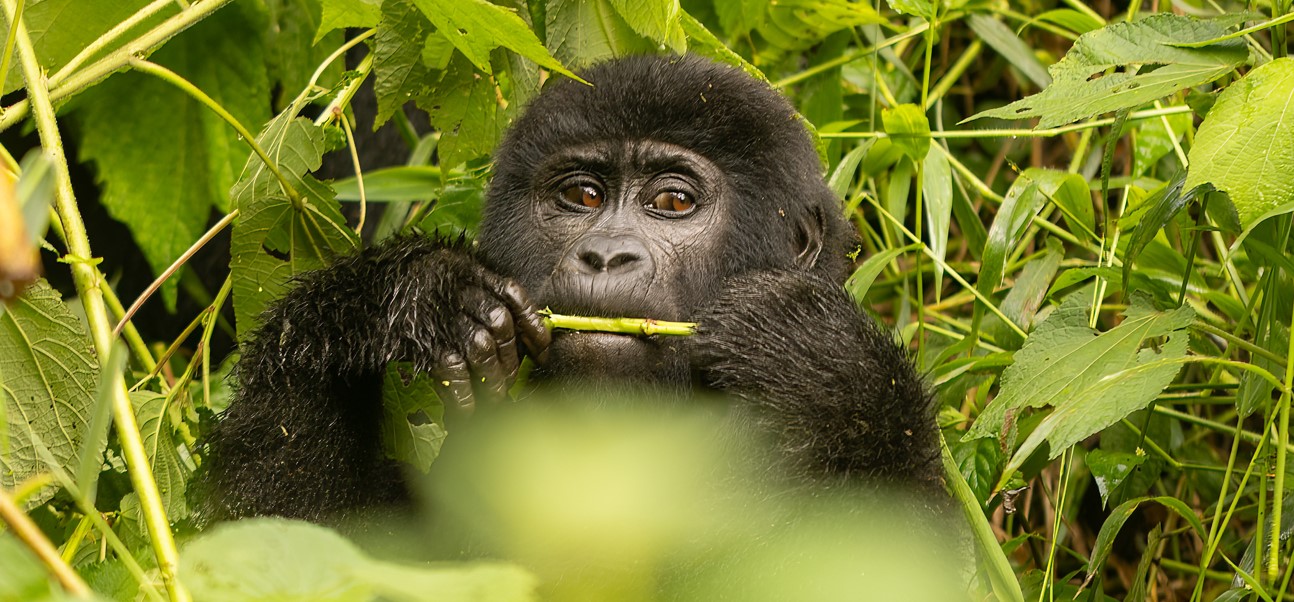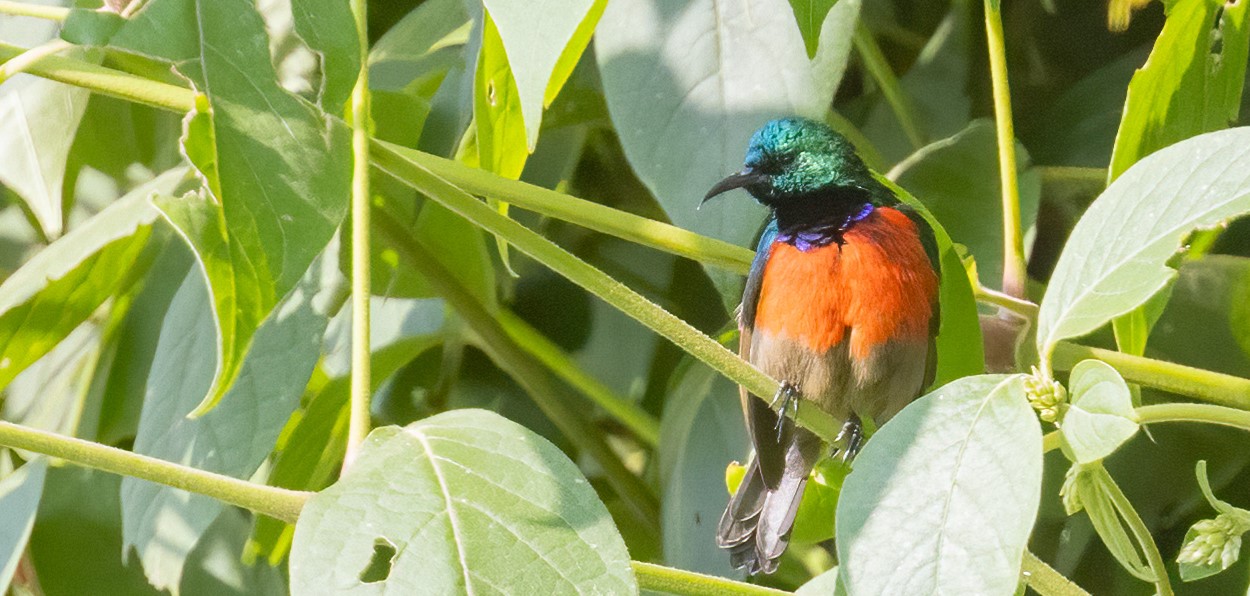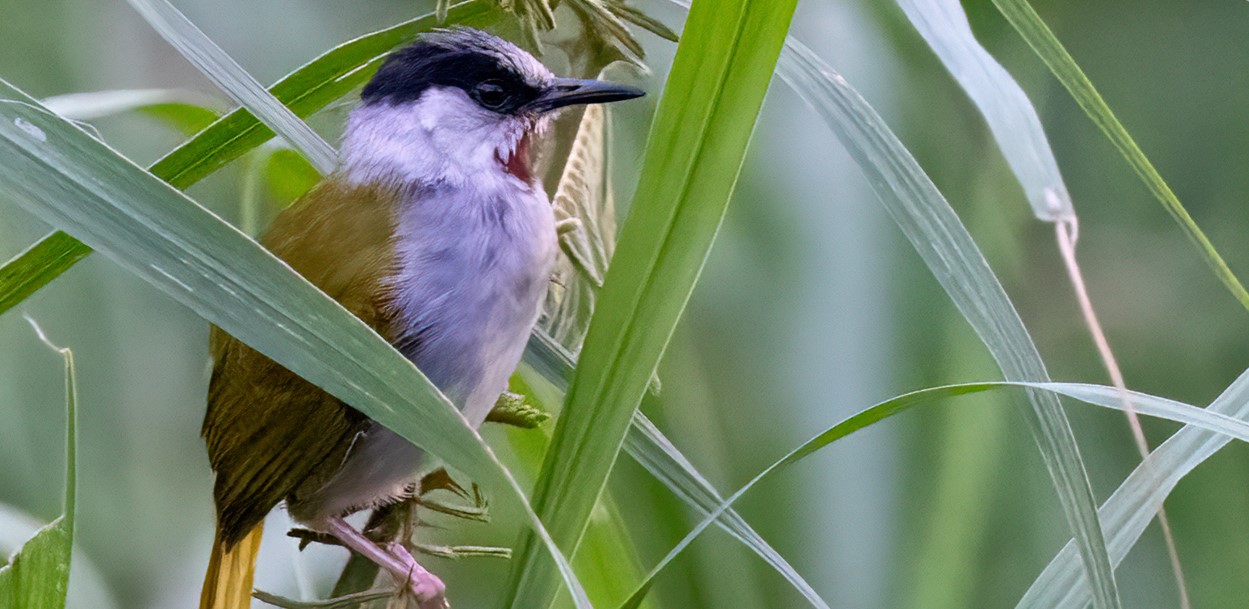
Activities in Mgahinga National Park Uganda
Activities in Mgahinga National Park, Uganda: It is situated in southwestern Uganda, in the Kisoro district. The park gets its name from the word Gahinga which locally means “a pile of volcanic stones”. The park, famous for mountain gorillas, was declared a game sanctuary in 1930 by the British and was later upgraded into a national park in 1991. It is bordered to the south by the Volcanoes National Park of Rwanda and The Virunga National Park of the Democratic Republic of Congo borders it from the west. The park covers 33.7 km2 and is known to be the smallest national park in Uganda. Also, Mgahinga National Park occupies the three Virunga volcanoes in the north, and these include Mount Gahinga which is 3,474 feet above sea level, Mount Muhavura, which is at 4,127 feet and is the highest among the three volcanoes, and Mount Sabinyo, which is 3,645 feet above sea level.
Also, the game park is among those included in the 434 sq km larger Virunga conservation area, which is found in three countries: Rwanda, Uganda, and the Democratic Republic of the Congo. The park occupies only 8% of the Virunga Conservation Area. The main reason for putting the Virunga Conservation Area in place was to protect the different mountain Gorillas that cross the different international borders in the region. So far, Mgahinga National Park has only one habituated transboundary Gorilla family.

Given the ever-wet climate of the area, the park consists of a sub-alpine zone of vegetation, which involves a zone of plants below the tree line. No trees are found around this particular zone, and it is divided into the moorland and the afro-montane belt zones. In this sub-alpine zone, the vegetation consists of mainly ground plants that are adapted to cold, extreme weather conditions. Above the Afro-montane belt is the Bamboo zone This zone of vegetation covers about 60% of the park and is a favourable habitat for large mammals in the park, such as the mountain Gorillas on the lower slopes and the golden monkeys on the higher slopes of the Muhavura mountain. It is a source of dependable food for the majority of the herbivores in the park.
Besides being home to mountain gorillas, the park is also a habitat for numerous wildlife species, including at least 39 mammal species such as the Golden Monkeys, Mountain Gorillas, Antelopes, Buffaloes, Leopards, South African Porcupines, Side-stripped Jackals, Bush Bucks, Black-fronted Duikers, and Golden Cats. Also, the park harbours over 115 bird species, making it another birder’s haven in Uganda. 24 of these bird species are Albertine rift endemics, as over 39 other bird species are biome bird species, which are usually of the Afro-tropical highlands. Commonly spotted bird species while in the park include the white-naked Raven, Northern and Rwenzori Double-collared Sunbird, the rare Shelley’s Crimsonwing, Black-headed Paradise Flycatcher, Rwenzori Turaco, Archer’s Robin-chat, Mountain Yellow Warbler, Dusky-turtle Dove, Regal, Rwenzori Blue-headed and Malachite Sunbird, among others

Apart from the numerous species and activities in Mgahinga National Park, Uganda, this Park is blessed with several other must-see attractions during your visit and these include;
-
Garama Cave ( Activities in Mgahinga National Park Uganda)
The 342-meter-long cave is located beneath a plateau in the north of the park exactly 3 km from the Mgahinga National Park headquarters. It is also 14 meters deep. The cave is popularly known for being a former home to the Batwa pygmies who are believed to have lived here for several decades until they were resettled. The Batwa found the Garama Cave too important as it was used as a council chamber and it is where they always retreated to after raiding neighbors. Currently, the cave is occupied by bats. It takes about four hours to reach the entrance of the Garama cave from the park Headquarters so all visitors are encouraged to engage in the free of charge Guided nature walks as they will reward you with spectacular views of the park and its surroundings, detailed information about the Batwa cultures and activities they carried out at the cave by the guides.
-
Mount Gahinga
Mount Gahinga is a dormant volcano which is located on the Rwanda-Uganda border. It rises to 3,474 meters above sea level and lies between Mount Muhavura and Mount Sabinyo. The vegetation found on the mountain is mainly afro-montane and mainly comprised of bamboo, which acts as a habitat for the endangered Mountain Gorillas. The mountain also has a 180-metre-wide swampy caldera on its peak. Furthermore, the park derives its name Mgahinga National Park from the mountain Gahinga, which locally in Rufumbira means” a pile of stones”. The mountain is also home to the rare Golden Monkeys.
-
Mount Muhavura ( Activities in Mgahinga National Park, Uganda)
The mountain is also popularly known as Mount Muhabura. It is a cone-shaped mountain and offers some of the best views. It is found on the border between Rwanda and Uganda. It is an extinct volcano and is among the eight Virunga Volcano ranges southwest of Uganda. The mountain is ranked third highest of the eight Virunga ranges and is found in both Rwanda in Volcanoes National Park and Mgahinga National Park in Uganda. The mountain is known for the spectacular views of the other 5 Virunga Volcano ranges and because of its high slopes, the park can be seen from many parts of Uganda and Rwanda. One of the most interesting and rewarding activities on the mountain, apart from tracking mountain gorillas, is trekking, which involves hiking for roughly 5 hours to the top of the mountain to see a small lake on top of the mountain. The trail also exposes visitors to views of other Virunga ranges, the Rwenzori Mountains in clear weather, the Rift Valley, and Lake Edward. This Muhavura Trail is about 12 km long and takes roughly 8 hours to finish.
-
Mount Sabinyo
Mount Sabinyo is found in three countries: Uganda, Rwanda, and Uganda, and also acts as a border between the three countries. The park is among the eight Virunga Volcanoes and has three peaks, and its summit lies at 3,645 metres. It also lies among the combined national parks established to protect mountain gorillas by the three countries, Uganda, Rwanda, and D.R. Congo, which share a border. Furthermore, the mountain gets its name Sabinyo from a local Kinyarwanda word meaning tooth because its peaks are shaped like teeth in a gum. The slopes of Mount Sabinyo are home to the giant and endangered Mountain Gorillas. The experience of hiking Mount Sabinyo takes about 8 hours after hiking 14 km and involves first hiking to Peak 1, then passing through narrow ridges that overlook spectacular drops into the gorges to reach Peak 2. Reaching Peak 3 is strenuous and rewarding at the same time, as you will have reached the summit where the borders of the three countries meet.
Mgahinga National Park is surrounded by two major ethnic groups that are found in the Kisoro district. These include the Bafumbira, farmers who cultivate the bases of the different mountains in the park, and the Batwa, believed to be the original dwellers of the mountains in the forests and caves who were recently resettled outside the park. The Batwa pygmies are mainly fruit gatherers and hunters for survival. One is advised to undertake the Batwa experience trail for one of the most satisfying cultural experiences in the park.
Furthermore, the park has numerous activities one must get involved in during a visit to Mgahinga National Park, and these include:
-
Gorilla Trekking ( Activities in Mgahinga National Park, Uganda)
This Gorilla trekking activity in Mgahinga National Park, which is part of the Virunga Mountains, is one of the highlights of an African safari, as everyone needs this lifetime experience of their first encounter with a giant ape. The gorillas leave their daily routines to take time to study the human presence with their soft brown eyes, as if seeking a connection with humans. Mgahinga National Park has only one habituated gorilla family, which is called Nyakagezi and is comprised of 9 members, which include 2 silverbacks, 3 adult females, 2 juveniles, and 2 infants. This family is mobile, as it can cross to neighbouring Rwanda or Congo. Gorilla trekking in this park is extremely strenuous and takes roughly the whole day. Be keen to notice and learn the ecology and behaviors of the Gorillas as explained by the guides. Trekking starts from Ntebeko at 7:45 and setting off is at 8:30 am. It can take 3 to 8 hours or even the whole day. While with the gorillas, avoid waving your arms, keep an 8-meter distance, and also do not use your flash, as this may scare away the Gorillas.
-
Golden Monkey Trekking
This is another unique activity that offers a lifetime experience to visitors to Mgahinga National Park. It involves strenuous activities of tracking down the Golden monkeys and spending time with them as they conduct their daily lifestyles. Mgahinga National Park has an estimated population of 2000–3000 golden monkeys, and these unique and beautiful primates are listed as endangered species by the World Conservation Union. The Golden Monkey is characterised by a bright-orange body, cheeks, and tail with black limbs, a tail head, and a crown, and is endemic to the Albertine Rift. Getting involved in this activity requires one to acquire a Golden Monkey permit in Uganda, which costs $50 for foreign nonresidents, $40 for foreign residents, and Shs 20,000 for East African residents. The Golden Monkey Trekking starts at 7:30 am by briefing the visitors. The trekking journey begins at 8 a.m, and it takes about 3 hours as the golden monkeys leave on the lower bases of the mountain. The visitors spend only one hour with the Golden monkeys. Furthermore, the activity does not limit the number of trackers, like gorilla trekking.
-
Birding in Mgahinga ( Activities in Mgahinga National Park, Uganda)
The entire Virunga Conservation Area comprises many species of birds endemic to the Albert Rift. Mgahinga National Park is home to roughly 79 different bird species in the different parts of the park, such as a walk along the Buffalo Wall towards the Democratic Republic of Congo (which is farmland along the northern edge of the park that is guarded by a dry-stone wall that keeps Buffaloes in the park and out of the crops) that takes you through a wetland with different birds such as the Yellow-crowned Canary, Cape Robin-chat, White-naked Raven, Dusky-turtle Dove, Yellow Bishop, Streaky Seed-eater, White-eyed Slaty Flycatcher, and Speckled Mousebird, among others. Also, around the campground, several bird species can be spotted, such as the Grey-capped Warbler, Kandt’s Waxbill, and African Stonechat, among others. Some of the most commonly viewed birds that one should look forward to ticking off their checklists include the Kivu Ground Thrush, Doherty’s and Lagden’s Bushshrike, Rwenzoro Double Collared Sunbird, Rwenzori Turaco, Banded Prinia, Handsome Spurfowl, Cinnamon Chested Bee-eater, Cinnamon Bracken Warbler, White-stared Akalat, Black-faced Apalis, Rwenzori Batis, and Regal Sunbird, among others. Don’t forget to carry your binoculars and a professional guide from Journeys Uganda for a satisfying and rewarding birding experience in Mgahinga National Park.
-
Batwa Cultural Trail in Mgahinga
This cultural experience will reveal to you the different lifestyles, foods, cultures, and traditions of the first dwellers of the mountains and forests. In meeting the Batwa pygmies, you will see the forest in their eyes and their lifestyle, which includes hunting and gathering fruits. Don’t forget to visit the different caves on this trail, such as the Garama Cave. The activity is usually combined with Gorilla trekking in Mgahinga National Park.
-
Mountain climbing and hiking are among the activities in Mgahinga National Park Uganda
The Park has 3 mountains that are part of the Virunga Volcanoes and these include Mount Sabinyo, Mount Gahinga, and Mount Muhavura. Therefore, climbing the steep mountains depends on one’s fitness and time, but Mgahinga National Park offers some of the best mountain climbing experiences in the region. This activity costs $ 35 for foreign non-residents, $25 for foreign residents, and Sh10,000 for East Africans. Hiking in the park is very rewarding, given the numerous attractions along the hiking trails. The hiking trails include the Gahinga Trail, which takes roughly 6 hours to climb the base of Mount Gahinga, the border trail, which climbs the base of Mount Sabinyo till the D.R.C. border; and the Cave Trail, which will educate you more about the Batwa pygmies as you witness their former home, like the Garama Cave, which is believed to have been an important place for council meetings and a retreat centre after attacking neighbours. The other trails are Mount Muhavura, which is around 12 km, and Mount Sabinyo which is 14 km and requires more than a day to complete due to their very steep nature as one tries to reach their peaks.
What is the best time to visit Mgahinga National Park?
Mgahinga National Park experiences a mild, cold, and wet climate due to the very high altitudes of the park, making it one of the coldest destinations in the country. Its average temperature ranges between 20 degrees Celsius during the day and 9 degrees in the evening. The park experiences no dry season, so there is always a possibility of rainfall. So, the best time to visit Mgahinga National Park is when there is less rainfall, usually from December to February and June to August, because the trails are simpler to navigate.
How do I get to Mgahinga National Park?
Since Mgahinga National Park is located in far south-western Uganda, it is 510 km from Kampala, the capital city of Uganda, by road. The most common route usually passes through the Kabale and Kisoro districts of southwestern Uganda, and it takes roughly 8 to 10 hours to reach the park from Kampala. Furthermore, the park can be accessed by air by arranging charter flights from Entebbe or Kajjansi to the Kisoro Airstrip.
Where can I stay inside and around Mgahinga National Park?
Given all the different attractions and activities in Mgahinga National Park, Uganda, the park also offers exceptional lodging and accommodation ranging from budget to high-end luxurious lodges. Some of the recommendable lodging facilities around the park include Mount Gahinga Lodge at Ntebeko, Mount Gahinga Rest Camp, and Community Campground for budget travellers, among others, as listed on Trip Advisor and other platforms. Happy Travels.

